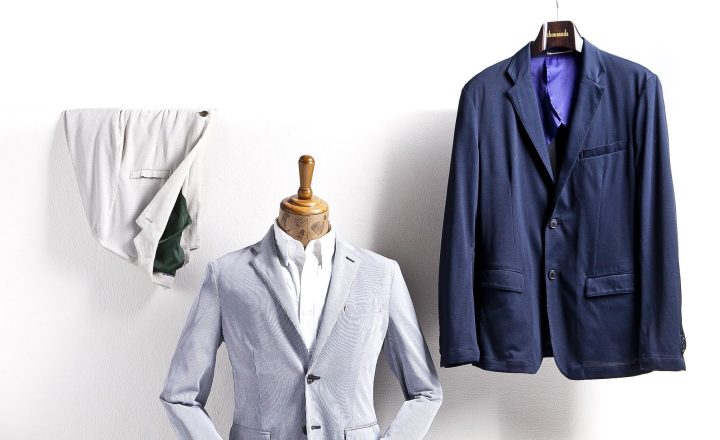FASHION
A brief history of the suit and its endless hold on menswear

Even as dress codes seem to loosen, the suit keeps a hold on menswear as the ultimate formal attire.
In 2016, The Suit, a short film written and directed by Jarryd Coetsee, was screened at the 19th Zanzibar International Film Festival, winning a Special Mention by the jury.
The Suit, which features South African actors John Kani and Phuthi Nakene, is set in Sophiatown in the 1950s and tells a tragic love story between three characters, Mr Maphikela, his wife, Mathilda, and the suit, a two-piece dark suit, complete with a shirt and tie; resting on a hanger, the suit is like a ghostly presence, the uninhabited fabric figure of Mathilda’s lover, whom her husband surprised her in bed with. After the lover flees, leaving his suit behind, Maphikela demands that Mathilda carries the suit with her all the time, publicly humiliating her for the affront.
The Suit is based on a story by South African writer Can Themba, published in 1963 in The Classic, the literary journal founded by Nat Nakasa and Nadine Gordimer. The archness of love and the tension between the characters bring an agonising tempo to the narrative, and the suit hangs around, like a dark cloud over life.
Not for nothing was the suit chosen as a character: it projects respect and authority, its rigidity is a stark reminder of patriarchy and influence.
The history of the suit can be traced back to Europe in the 17th century, and a decree by Louis XIV that in the Palace of Versailles men must wear a long coat, a waistcoat, a cravat, a wig, trousers down to the knee and a hat. The French Revolution gave a radical freeze to Versailles fashion trends, while a British dandy, Beau Brummel, refined the suit, giving it a new popularity across the Channel.
Centuries pass and the suit holds court, worn by middle-class businessmen and dignitaries around the world. It becomes a symbol of conformity, a uniform; it is a nod to the establishment, a silhouette that says, “take me seriously”, moving from day to night, from the office to gala dinners, here with a tweak of the lapel, there with an extended tail.
“Putting on formal clothes makes us feel powerful, and that changes the basic way we see the world,” noted psychologist Abraham Rutchick, an author of the 2015 study The Cognitive Consequences of Formal Clothing.
The suit is ubiquitous at celebratory occasions when a dress code is announced: a black-tie dinner, an awards night, a wedding. Beyond vanity or personal expression, it becomes a form of courtesy extended to others, a bow to the hosts.
And when not on, the suit sparks controversies: in 2009, shortly after US President Barack Obama took office, a former chief-of-staff from the Bush era complained about Obama’s tendency to be seen in the White House without his suit jacket on. And that wasn’t the biggest sartorial crisis: in 2014, the Fox News battalion launched a bizarre – but not unusual – conspiracy theory about Obama being a Marxist after he wore a tan suit, and not a dark blue or black one. Shocking.
Closer to home, the suit is less a part of political attire than in the West. Because of our continent’s complex history in which colonial powers tried to suppress cultural influences and outfits worn by the nations they colonised, the suit has had a different significance, importance and influence.
Nelson Mandela wore a suit in Parliament, but it was his shirts that made him stand out. Former presidents Thabo Mbeki and Jacob Zuma often addressed their audience in casual bomber-style leather jackets. And today, the EFF is known for wearing red overalls signalling, as Rebecca Davis wrote: “their commitment both to parliamentary work and to the workers they represent”.
The blazer has been incorporated into some indigenous cultural practices. When Xhosa men come out of their initiation into manhood, the mandatory outfit they wear for the first few months almost always includes a blazer. It once had to be made in a check print, resembling the classic “glen plaid”, also known as Prince of Wales check.
At the recent Pitti Uomo, dubbed “the most important international event for menswear and accessories and for the launch of new men’s fashion projects,” which is held twice a year in Florence, Italy, fashion industry insiders, influencers, designers gathered.
There too, the suit reigned, explored in a multitude of colours, fabrics and silhouettes. It had an undeniable touch of dandyism, and was a stand-out feature of Pitti Uomo street style and a reminder of the unshakable hold the jacket and trouser combination has on menswear.
It seems that no matter how old the suit is, as Mandela once said, “If you want to preach a revolutionary message, wear a suit.” ML
















 Become an Insider
Become an Insider